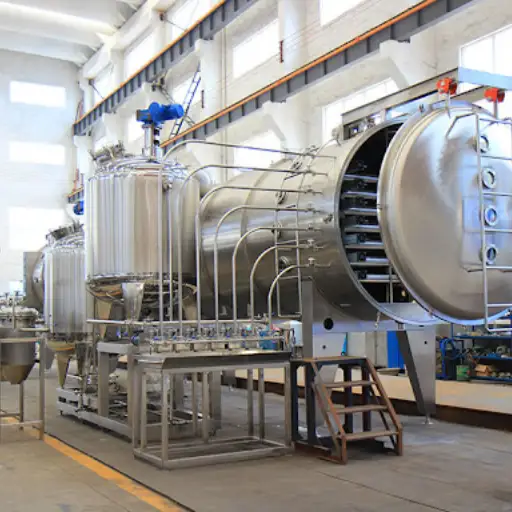Efficiency and creativity are crucial to success in the current fast-paced industrial scenario. One technology that has made ground in this area is the industrial microwave dryer. This innovative system provides an alternative to traditional drying methods, simplifying processes and improving product quality in different sectors. These dryers use microwave energy, which makes them capable of shortening drying time, minimizing energy consumption, and increasing productivity. In this article, we will look at how industrial microwave drying works, its advantages, and its transformative effect on industrial microwaves so that readers can fully understand this state-of-the-art technology.
What is an Industrial Microwave Dryer?
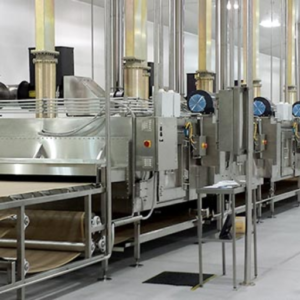
Image source: https://industrialmicrowave.com/
An industrial microwave dryer is a specific type of equipment that uses microwave energy to eliminate moisture in different materials. Unlike traditional methods of drying, which depend on heat conduction, microwave dryers create internal heat and speed up moisture removal evenly. This technology employs electromagnetic waves to make water molecules vibrate within the material, which results in faster evaporation rates. Consequently, industrial microwave dryers speed up drying time, but they also help maintain the quality and integrity of the product, hence their importance in contemporary manufacturing processes.
How does a microwave dryer work?
A microwave dryer uses microwave radiation to heat and remove moisture from materials. When applied, microwaves penetrate the material and create excited water molecules that vibrate at high frequency. Such agitation produces heat, which brings moisture to the surface, where it escapes as steam. This process is unlike traditional drying methods because it allows even distribution of instant humidity removal across a substance instead of relying on surface transfers of thermal energy. Consequently, this leads to a drastic reduction in drying time, improved energy efficiency, and better quality products, thus making microwave drying suitable for different industrial applications.
Advantages of using an industrial microwave dryer
- Fast and Effective: Industrial microwave dryers cut drying times significantly, unlike traditional drying methods. This allows them to quickly heat the inside of food and usually draw out moisture in no time.
- Energy Efficiency: These dryers are made to use energy wisely by only targeting moisture within a material instead of heating its entire mass. As a result, operational costs are minimized while less energy is consumed.
- Preservation of Product Quality: The microwave drying process reduces thermal degradation that usually occurs with conventional drying techniques, which helps maintain important nutrients, flavor, and texture, especially for food items and sensitive materials.
- Versatility: From textiles to pharmaceuticals or even food processing, among many other industries – this machine can work with different kinds of substances having various levels of humidity content
-
Space-Saving Design: High capacity throughput in manufacturing processes can be achieved even when using microwave dryers due to their compactness, which allows them to fit into smaller spaces and allows them to be flexible in factory setups.
Comparison between microwave drying and traditional methods
Microwave drying differs significantly from traditional methods, such as hot air and freeze drying, in several ways.
- Heating mechanism: Traditional techniques use conduction and convection to transfer heat, which makes them slower in removing moisture. Unlike this, microwave drying employs electromagnetic waves to heat materials internally, thus allowing fast evaporation of moisture from the inside out.
- Drying time: Efficiency-wise, microwave drying has an edge over conventional methods; while the latter may take hours or days to dry items, microwave systems can do so within minutes, saving manufacturers a lot of time.
- Energy consumption: Microwave dryers use targeted heating that reduces wastage, so their energy consumption is lower than traditional ones. On the other hand, heaters for large-scale production usually consume more power because they have to warm up all bulk material, even if only part needs drying.
- Quality of the final product: In terms of quality, food processed using microwaves retains better nutrients and flavors compared with those dried traditionally since these processes tend to cause thermal damage to sensitive compounds. The importance here is high, especially where food processing requires top-notch standards.
-
Versatility: Microwave technology works well with different kinds of materials and varying levels of moisture, unlike traditional methods, which are limited by their ability to deal with non-uniform substances, leading to inconsistent results during the drying process in many industrial applications.
To sum up, microwave drying is a novel and efficient method that overcomes some shortcomings of classical techniques, particularly concerning speediness, energy efficiency, and product excellence.
How Does Microwave Technology Enhance Drying Processes?
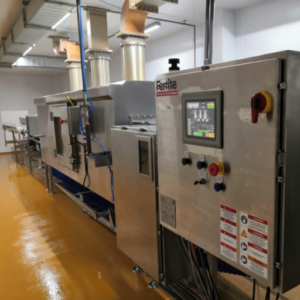
Microwave technology is effective in drying materials because it uses electromagnetic waves to create heat inside the dried material. This method works by heating and evaporating moisture at the same time, thus allowing for quick moisture removal, which shortens drying times and increases energy efficiency. Moreover, microwave heating is direct and, therefore, does not overheat or damage sensitive products. Consequently, this consistency ensures that different materials have uniform moisture content, making them more effective in a wider range of industrial applications.
Overview of Microwave Energy Applications
Microwave energy can be used across various sectors and industries, given its unique heating properties. In the food industry, microwaves cook food products like meals or snacks and pasteurized milk, among other dairy products, while preserving their nutritional value. In medicine, microwaves are used during hyperthermia treatment, targeting cancer cells within tumors without affecting surrounding healthy tissue. Also in manufacturing processes such as textile drying or ceramic sintering; rapid uniform heating capabilities make these processes much more efficient with higher quality end results due to improved performance levels through enhanced energy usage/efficiency from microwaving instead of conventional methods e g ovens stoves.
Principles of microwave techniques in drying
Microwave drying works on the principle of electromagnetic radiation that causes water molecules in materials to vibrate, which creates heat through friction. As a result, this heat quickly evaporates moisture and makes the process energy efficient. Microwaves penetrate the material for volumetric heating; unlike conventional methods where heating is done from outside towards inside, it heats all parts of the product at once. This leads to even distribution of moisture content throughout the material being dried while also reducing drying time and thermal stress on heat-sensitive materials. In addition, controlling microwave frequency and power output improves efficiency in various processes such as food preservation or industrial processing of materials.
Microwave drying and heating: A closer look
Microwave heating and drying methods are becoming increasingly popular because they are efficient and effective in various applications. Microwave drying reduces processing time and improves product quality by maintaining nutrients and flavors, especially in food items. This technology uses microwaves to produce heat directly inside the material, allowing for quicker moisture removal with less risk of over-drying. Moreover, these methods use less energy than traditional drying techniques and, hence, are more environmentally friendly. From agriculture to pharmaceuticals, industries are adopting microwave technologies that allow for better control over heating parameters, resulting in uniform outcomes.
Why Choose Microwave Drying Over Conventional Methods?
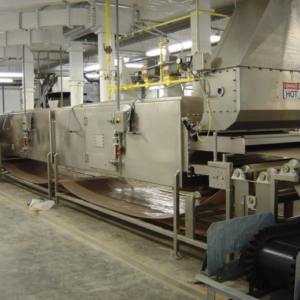
There are many advantages to microwave drying over conventional methods that make them appealing to manufacturers and processors. The most significant is the great reduction in drying time; microwave energy allows moisture to be removed quickly and evenly, thereby increasing production cycle efficiency. Also, this technology is less damaging to heat-sensitive materials, which minimizes the chances of degrading important nutrients and flavors, particularly in food products. Furthermore, not only does microwave drying save money by being more energy efficient, but it also promotes sustainability by reducing total power usage. Lastly, different materials can be used in microwave systems because they provide precise control, thus widening their application potential across various industries.
Speed and efficiency of microwave drying
Among the various drying methods, microwave drying is popularly known for its speed and efficiency. Sometimes, processing times can be reduced by up to 50% or more because materials are heated directly. This fast moisture evaporation increases production rates and energy conservation since less power is used when drying time is decreased. Additionally, microwave systems can provide even heating throughout the material being dried, reducing the likelihood of over-drying and subsequent waste. The quickness and lower cost advantages make microwave drying an innovative solution for contemporary manufacturing requirements.
Uniform drying and its benefits
Consistent drying is a crucial aspect of the drying process that ensures uniformity in removing moisture from materials. This homogeneity is key to maintaining the quality and integrity of the final product. One significant advantage of consistent drying is that it prevents food products from having uneven texture and taste, which can result when some areas are over-dried while others are still moist. It also helps to retain essential nutrients by achieving even moisture levels, thus improving the nutritional profile of dried goods. In industrial applications, uniform drying minimizes significant losses due to reprocessing or discarding improperly dried materials. Industries can optimize drying times and promote high-quality outcomes through microwave drying technology, increasing profitability and customer satisfaction.
Furthermore, innovative drying methods focusing on uniformity can lower production costs and minimize waste, supporting sustainability efforts across different industries.
Environmental impact and energy efficiency
Not only does microwave drying technology improve efficiency and reduce environmental impact, but it also saves energy by cutting down drying times significantly compared to traditional methods. Reports indicate that microwave systems consume less energy per unit of dried product because they heat materials more efficiently through direct action on the moisture within the substrate. Moreover, shorter drying periods decrease greenhouse gas emissions related to power generation. Industries are becoming increasingly aware and focused on sustainability; hence, adopting this type of drying can help lower operational costs while reducing carbon footprint. To sum up, incorporating energy-efficient technologies into manufacturing processes aligns with worldwide efforts to promote environmental stewardship and benefits manufacturers financially.
What Are the Key Components of Microwave Drying Systems?
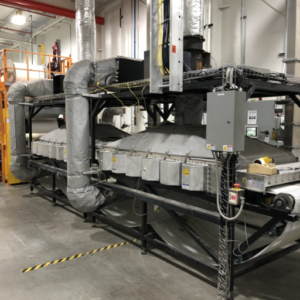
Several essential components facilitate the drying process in microwave drying systems. These include:
- Microwave Generator: This part creates microwave radiation using a magnetron or other means to produce the electromagnetic waves needed for direct moisture heating.
- Waveguide: This structure directs microwaves from the generator into the drying chamber, ensuring energy is distributed evenly throughout all dried material.
- Drying Chamber: This is where the material goes when dried. The design allows efficient circulation and removal of air and humidity while keeping the environment controlled.
- Cooling System: It regulates the temperature inside a dryer so as not to overheat materials, thereby guaranteeing uniformity in their respective rates of evaporation during different stages of drying them out completely
- Control Panel: Operators can use these interfaces to modify things like power level, drying time, and temperature settings, allowing accurate manipulation of every stage involved with this particular procedure.
To guarantee efficient and effective drying while maintaining quality standards on processed goods, we must have these parts working together cooperatively and in synergy at all times.
Industrial microwave ovens and their functionalities
High-capacity industrial microwave ovens are used in food processing, pharmaceutical manufacturing, and many other fields. These ovens use microwaves to heat and dry products quickly and uniformly for large-scale operations. They include:
- Fast Cooking: Industrial microwave ovens can cook or dry much faster than conventional methods because they directly heat the material at the molecular level.
- Energy Efficiency: To optimize energy usage, these specific types of ovens usually have advanced technologies designed to minimize power while maximizing output, which reduces operating costs.
- Adaptability: Manufacturers can modify them for different applications as they can process a broad range of materials, including foods and industrial products, enabling them to achieve desired results based on their unique requirements.
- Uniform Quality: Industrial microwaves help ensure even distribution of heat, thus preventing problems like uneven cooking/drying that affect the taste, texture shelf life, therefore maintaining product quality
- Increased Control: Integrated control systems in such types of ovens allow monitoring/adjustment of temperature/time/power levels accurately; hence, consistent repeatability processes become possible
Various industries rely on industrial microwave ovens for more efficient production cycles with better quality outputs.
Microwave generators and power management
Microwave generators in industrial microwave ovens produce the microwave radiation that heats materials. Magnetrons or solid-state devices typically generate microwaves at predetermined frequencies, which usually fall within 2.45 GHz, and this frequency works well with most materials.
Microwave systems’ power management is about controlling and optimizing microwave energy output to guarantee efficient processing. Advanced control systems that can adjust the power levels based on real-time feedback from the process are used. Effective power management not only maximizes energy efficiency but also improves the quality of the end product by providing uniform heating, thereby reducing the chances of overheating.
Moreover, implementing feedback control systems such as monitoring temperature and moisture levels fosters accurate operation, increasing productivity while minimizing waste during manufacturing processes.
These technologies allow manufacturers to achieve consistent outcomes while conserving energy, thus making modern industrial applications heavily reliant on microwave generators, an essential aspect of manufacturing.
Integration with existing drying systems
Integrating industrial microwave ovens with existing drying systems can significantly enhance processing efficiency and product quality. Manufacturers are increasingly recognizing the advantages of combining this new approach to drying with traditional methods, such as convection or infrared drying. This hybrid method allows for faster drying times and moisture control because microwave energy heats materials from within, preventing surface dryness while ensuring uniformity.
On top of that, advanced control systems can allow seamless operation between microwaves and conventional drying methods by adjusting parameters according to specific material properties and moisture content in different facilities. This integration usually results in better energy consumption, leading to lower operational costs and eventually increasing throughput for manufacturers who want their products consistently high quality but more sustainable. As industries keep changing over time, it is expected that incorporating microwave technology into current frameworks will become commonplace, enhancing productivity overall and making everything greener.
What Are the Applications of Industrial Microwave Dryers?
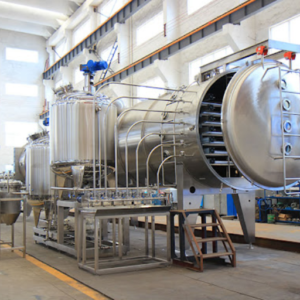
Industrial microwave dryers are used in many different industries because of how efficient and effective they are at removing moisture. In the food industry, fruits, vegetables, and meats are dried with microwave dryers, which helps keep their nutrients and taste intact. These tools help quickly dry active ingredients for pharmaceuticals without compromising quality or potency. The textile sector also uses them to dry fabrics, while the paper industry employs them to speed up drying during production. On top of this, microwaves have started being used in construction materials where things like wood and ceramics need to be dried faster but still retain integrity throughout the process – all due to heating cycles becoming shorter when compared with traditional methods! However, it’s clear why such versatile machines would be needed across various fields today.
Food industry applications
Drying processes in the food industry are greatly enhanced by using industrial microwave dryers, leading to better preservation and flavor retention. According to recent insights obtained from top culinary and processing sites, a feature of microwave drying is its ability to extract moisture from fruits, vegetables, and meats, thus preventing spoilage while maintaining their nutritional quality. This method not only reduces drying times but also decreases energy consumption when compared with conventional drying methods. Furthermore, manufacturing companies benefit from this since it allows them to achieve uniformity in drying results, which is important for consistency in texture and taste across batches. With an increasing demand for high-quality dried foods, manufacturers are finding that rapid processing capabilities provided by microwave technology have become essential.
Pharmaceutical and chemical industries
Microwave dryers play a critical role in developing and producing different products within the pharmaceutical and chemical industries. Active pharmaceutical ingredients (APIs) and excipients can be dried at controlled temperatures using these machines to retain their therapeutic properties while becoming more stable over time. Industry leaders have reported recently that this approach speeds up overall production processes, lowers contamination risks, and guarantees final product uniformity, among other benefits derived from using microwaves for drying purposes within various sectors, including pharmaceuticals, where energy efficiency has been highlighted as one of its advantages, especially for manufacturers looking to cut down operational costs without compromising on quality assurance compliance standards set by regulatory bodies governing such industries worldwide thus making adoption increasingly significant.
Textiles and other industrial uses
Industrial microwave dryers have become beneficial in the textiles industry, particularly for fabric drying and finishing processes. Removing moisture from textiles faster, these dryers shorten drying time and increase productivity in manufacturing. The controlled microwave heating also leads to less damage to delicate fabrics, keeping their quality intact. Additionally, this technology is used by industries for dyeing because it evenly distributes heat across large amounts of material, resulting in consistent coloration. In summary, introducing microwaves into textile drying makes production more efficient with lower energy costs while using sustainable methods.
Frequently Asked Questions (FAQs)
Q: What is an industrial microwave dryer?
A: An industrial microwave dryer is designed for large-scale applications. It uses microwave heating and drying technology to efficiently and uniformly dry materials.
Q: How does microwave drying equipment work?
A: Microwave drying equipment uses microwave power to generate heat within the material, which causes the moisture to evaporate quickly. This provides a faster and more efficient drying process than traditional methods like drying rooms and convection ovens.
Q: What are the benefits of using a microwave drying solution over traditional drying methods?
A: A microwave drying solution offers numerous benefits, including quicker drying times, more uniform drying effects, reduced energy consumption, and combining processes like sterilization and drying in one step.
Q: What makes microwave drying quicker than traditional methods?
A: Microwave drying is quicker because it heats the material internally instead of relying on external heat transfer, allowing for faster and more efficient moisture evaporation.
Q: Can industrial microwave drying machines be used for sterilization?
A: Yes, industrial microwave drying machines can also be used for sterilization. The microwave heating process eliminates microorganisms, providing both drying and sterilization in one step.
Q: Is there any risk of microwave leakage with industrial microwave systems?
A: No, industrial microwave systems are designed with safety features to prevent microwave leakage. Regular maintenance and proper use ensure the equipment operates safely.
Q: How does microwave treatment benefit color drying and adhesive setting?
A: Microwave treatment provides uniform heating, which benefits processes like color drying and adhesive setting. Compared to other methods, this results in consistent and high-quality outcomes.
Q: What types of materials can be processed using microwave drying equipment?
A: Microwave drying equipment can process various materials, including food items, pharmaceuticals, textiles, and industrial products, making it versatile for different applications.
Q: What is IMS (Industrial Microwave Systems), and how is it related to industrial microwave dryers?
A: IMS, or Industrial Microwave Systems, refers to the comprehensive setup of microwave drying equipment and systems used in industrial applications. These systems can handle complex processes such as mealworm drying and ensure uniform drying effects.
Q: Where can I find more information, or where can I purchase an industrial microwave drying machine?
A: For more information or to purchase a microwave drying machine, contact us directly through our website or email for expert guidance and tailored solutions.













